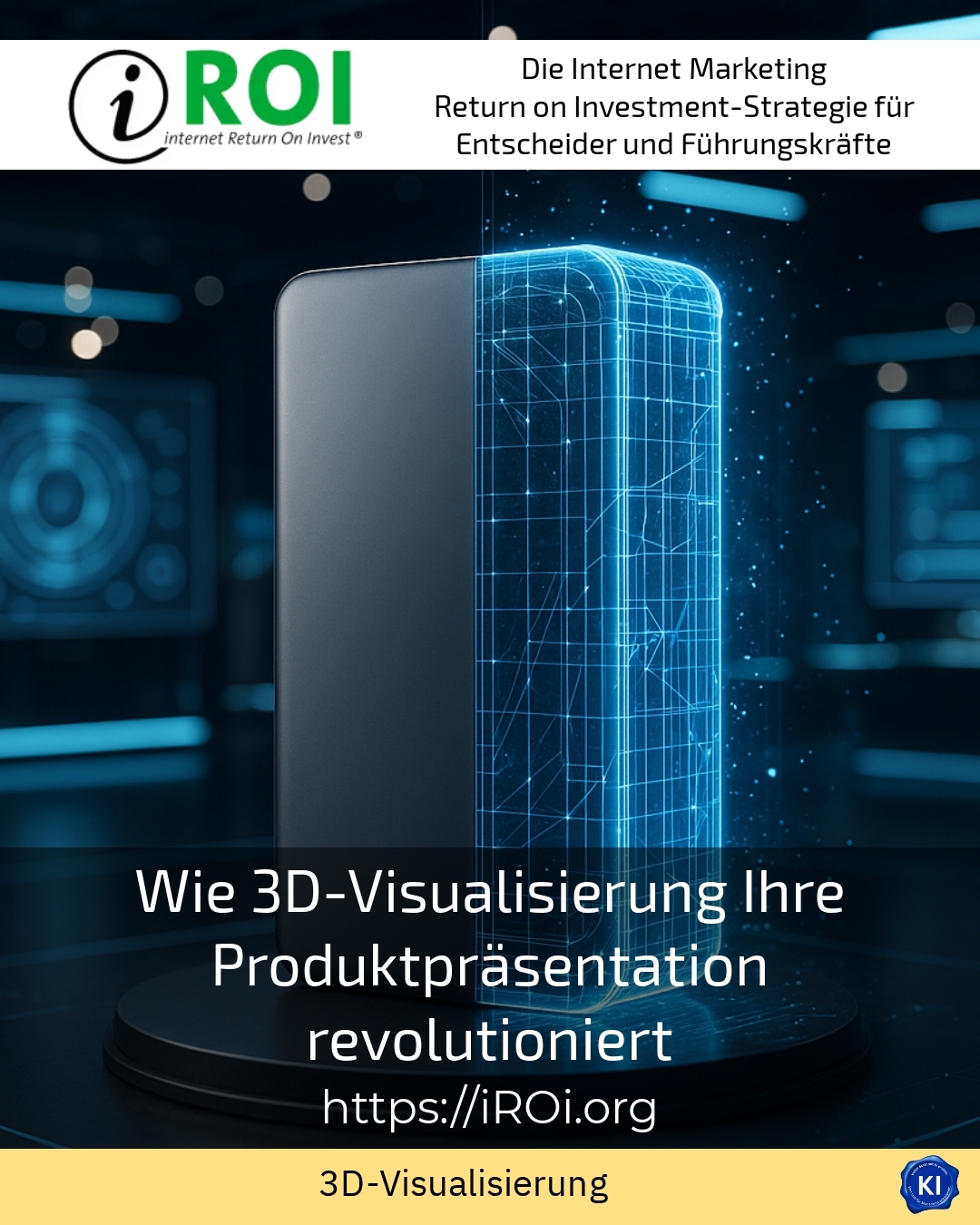In today's business world, 3D visualisation has taken on a prominent role in the design of product presentations. It helps companies to present their products in a unique and fascinating way. The technology makes it possible to visualise products virtually, highlighting details in a realistic and appealing way. In this way, 3D visualisation not only increases attractiveness in marketing, but also facilitates sales because potential customers can discover and experience products intensively.
Wide range of applications for 3D visualisation in product presentations
The flexibility of 3D visualisation allows products to be easily adapted in terms of colour, shape and other properties. Furniture manufacturers, for example, can show different variants and fabric types digitally without having to produce expensive and time-consuming physical samples. Different material options or equipment variants are also visualised in the electronics industry, which makes it much easier to advise customers.
In the automotive sector, 3D visualisation offers interactive configurators that enable customers to put together vehicle models online according to their individual wishes. Details such as paint colour, wheel rims or interior fittings can be changed in real time. This dynamic presentation supports the decision-making process.
Another sector that benefits from 3D technology is the property industry. Developers create virtual tours of properties that have not yet been built. Prospective buyers can thus get a realistic sense of space and benefit from an emotional connection to the product before buying.
BEST PRACTICE with one customer (name hidden due to NDA contract) The customer used 3D visualisation to develop complex product variants digitally and coordinate them with end customers. This led to a significant reduction in development costs and increased customer satisfaction through active involvement. As a result, decision-making processes were significantly shortened.
How 3D visualisation saves costs and time
Traditional product presentations often require physical prototypes or elaborate photo shoots. 3D visualisation often replaces these with virtual models that can be modified quickly if required. In the fashion industry, for example, cuts and fabric colours can be digitally optimised and visualised. This reduces expensive production errors.
In mechanical engineering, 3D visualisation shortens development cycles. Complex devices can be visualised error-free at an early stage, before production begins. This saves resources and speeds up the market launch.
In the furniture trade, the time saved is used to realise product-oriented marketing campaigns more quickly. As variants are presented digitally, logistics and storage costs are reduced. New collections can also be quickly placed in the digital shop window.
BEST PRACTICE with one customer (name hidden due to NDA contract) The project supported an efficient market launch through virtual product presentations. The marketing department was able to flexibly adapt the visualisations and thus promptly align the communication measures with current trends. This significantly increased the response from the target group.
Interactive elements as additional added value through 3D visualisation
The integration of interactive features significantly increases customer loyalty. Users can rotate and zoom products or experience them in different scenes. This creates an immersive experience that significantly enhances online shops and digital showrooms.
Manufacturers of household appliances, for example, use 3D animations to make functionalities easier to understand. In industry, interactive visualisations illustrate complex processes and make it easier to train users.
3D visualisation is also becoming increasingly important in new technologies such as virtual reality (VR) and augmented reality (AR). Furniture stores offer AR apps that allow customers to virtually try out furnishings in their own four walls - a powerful emotional shopping experience.
Practical tips for the successful use of 3D visualisation
1. develop realistic and detailed 3D models that fit the product and the target group.
2. add interactive functions to the visualisations so that users can discover your product on their own.
3. use 3D visualisation to offer product variants quickly and cost-effectively and to react flexibly to customer requests.
4. integrate 3D visualisations into various sales channels - online shop, social media, trade fairs or customer meetings - to increase reach.
iROI coaching helps companies to develop and implement the right strategy for 3D visualisation projects. Our experience helps to optimally utilise the potential.
My analysis
3D visualisation is revolutionising product presentations thanks to its high flexibility, cost efficiency and interactivity. Companies benefit from realistic visualisations that appeal to customers emotionally and encourage engagement. At the same time, development times and costs are reduced. The technology opens up a wide range of possibilities for presenting products in a customised and efficient way. Especially in times of digital transformation, 3D visualisation is an important driver for successful marketing and sales strategies.
Further links from the text above:
3D product visualisation - examples, costs & advantages
How 3D visualisation revolutionises your product presentation
3D product visualisation: The complete guide for companies
Why 3D visualisation is a must for product presentations
For more information and if you have any questions, please contact Contact us or read more blog posts on the topic internet Return on Investment - Marketing here.
















